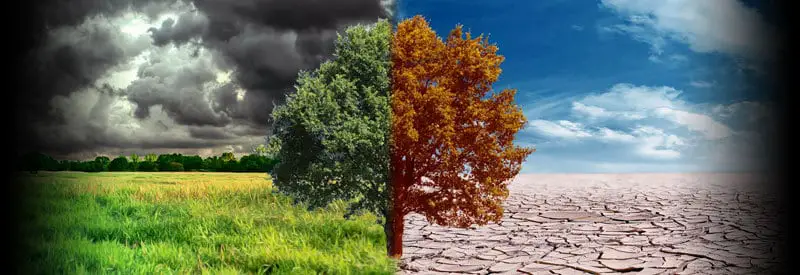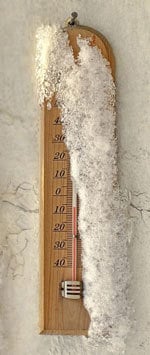Understanding The Difference Between Weather And Climate

Weather and climate are among some of the most discussed topics worldwide and are often mistakenly used interchangeably. We take a closer look at both occurrences and the differences between them.
Weather is defined as the specific atmospheric conditions you experience at a given time in a particular location. Climate, on the other hand, is the average weather conditions and trends of a region established over an extended period, typically measured over a minimum of thirty years or more.
In fact, for a vast number of people, weather and climate are one and the same thing. For those in the know, this can be incredibly frustrating, even infuriating. This is especially true for weather enthusiasts, meteorologists, and climatologists.
To be fair, though, if weather and climate are not your passion, it is easy to get confused. The two terms are often used interchangeably by those who are supposed to know better, sometimes even by the mainstream media.
In this article, we highlight the difference between weather and climate, as well as the factors that make them different from each other.
However, we need to be more specific to really understand the difference between the weather and climate. This means we need to look at the specific factors that determine the weather and climate.
The Role Of Time, Patterns, and Averages In Determining Weather And Climate
Before delving into the specifics of how time, patterns, and averages impact the weather and climate, one first needs to define exactly what the difference between the two occurrences are:
The Difference Between Weather and Climate
Weather is the actual atmospheric conditions you experience at a specific time in a particular location. Climate, though, refers to the weather patterns and averages of a region established over an extended period, typically measured over a minimum of thirty years or more.
The Role Of Time In Weather And Climate
The biggest difference between weather and climate can be summed up in one word: Time. As already mentioned, the weather is measured over a relatively short period of time, ranging from minutes to a day or two.
Climate takes much longer to establish weather patterns and averages, which is used in forecasting models to determine future atmospheric conditions.
The standard time to determine the climate (or climate change) of a region is 30 years. That is 30 years of weather data taken daily to establish weather patterns and averages.
But what are these weather patterns, and how are they established?
Weather Patterns In Terms Of Weather And Climate
Weather patterns are specific atmospheric conditions that stay the same for a prolonged period of time.
In terms of weather, we look at a pattern of atmospheric conditions that last from a number of days to a couple of weeks. (Examples include long hot, dry spells or prolonged periods of cold and wet weather.)
In terms of climate, we observe weather patterns that are typically associated with specific seasons of a particular country or region. It may even establish a tendency or change in weather patterns between different years.

In other words, patterns associated with weather are established over a short period of time (days and weeks), while patterns associated with climate are formed over several years (from decades to sometimes even centuries).
(The cold, snowy winters and warm, humid summers of Pennsylvania is a perfect example of the former. The gradual increase in global temperatures over the past few decades is an example of the latter.)
Averages And The Elements Of Weather And Climate
The elements that weather and climate use are the same ones. A few examples include temperature, rainfall, wind tendencies, humidity, solar radiation, barometric pressure, etc.
The averages calculated for each of these variables/elements, however, are used differently when applied to the weather and climate, respectively.
Some of the averages measured to determine the weather and climate conditions include:
1) Temperature Averages

Temperature, specifically temperature averages, is one of the main talking points in recent years due to the impact and concerns regarding Global Warming.
In terms of weather, calculated temperature averages are mostly used in forecasts to indicate how warm or cold it will be in the coming days or weeks.
(Short-term temperature averages are also calculated and stored for historical weather data.)
In terms of climate, it is used to help determine how warm it will be during a specific season or time of year in a particular region.
2) Rainfall Averages
Rainfall is another important variable or element that plays a major role in determining atmospheric conditions over the short and long term.
In terms of weather, recorded rainfall averages are used in forecasts to indicate the probability and amount of rain to fall in the coming days or weeks.
(Short-term rainfall averages are also calculated and stored for historical weather data.)
In terms of climate, it is used to help determine how much or little precipitation is expected during a specific season or time of year in a particular region.
3) Wind Speed, Direction, And Frequency Averages
Wind is not just a result of weather and climate, but a main driving force of weather systems across the world. Therefore, it is crucial to constantly keep a record of winds and the resulting weather conditions, wherever and whenever it occurs.

In terms of weather, recorded wind speed, direction & frequency averages are used, not only in forecasts to indicate wind tendencies in the coming days or week but also the resulting weather events.
(Short-term wind averages are also calculated and stored for historical weather data.)
In terms of climate, it is used to help determine how wind averages will influence and drive weather systems in the future during a specific season or time of year in a particular region.
4) Humidity Averages
Humidity is not such an obvious and tangible weather element or variable as temperature, rainfall, and wind tendencies, but plays just as an important role to the meteorologist and climatologist.
Without repeating everything that was already said about the other variables, the same applies to the recording and use of humidity averages.
If you are unfamiliar with humidity and the role it plays in weather and climate, you can find all the information in this article.
These are just a few examples of how the averages of weather elements are used in different ways by the weather and climate.
It can be a bit confusing, and you may have to read a few sentences and statements a couple of times before it makes.
It will be worth it, though, as it will help you better understand how these different averages are used differently in the context of weather and climate.
Expectations And Outcome
There are a LOT of similarities between weather and climate, as you would have noticed throughout this article.
It is no wonder and should come as no surprise that so many people are completely confused about the difference between the two or even concluded that they are essentially the same thing.
There is one very effective way of telling the difference between weather and climate, which is a brilliant explanation of distinguishing between the two:
"Climate is what you expect. Weather is what you get."
That sums it up! This short statement can be explained as follows:

Decades of weather data gathering and calculations help meteorologists to create a prediction of what the general weather conditions will be like during particular seasons or how it will change in the future.
In other words, they create an expectation.
When present-day weather forecasts are made, you experience the actual weather on a specific day or during a particular season. It may be on par or deviate from what the general climate conditions for the region may indicate.
This is the actual weather outcome or "what you get."
This should help to make things more understandable. It will also help to explain the heading of this section. The best way I can capture it in my words...
"Climate creates an expectation. Weather is the actual outcome."
These two explanations will help to summarize and define the real big difference between weather and climate. I think any more explanations or examples will just cause more confusion than really helping.
Conclusion
I hope after reading this article, you will have a clear understanding of the difference between weather and climate. I also highlighted why these differences exist and the different purposes each one serves.
Yes, they are similar in many ways. They can also seem to contradict each other, which is not the case. As I just said, they serve very different purposes.
The most important thing to remember is that, although they are different and serve different purposes, they are both part of the same overarching study of meteorology. They work to complement and not work against each other.
Never miss out again when another interesting and helpful article is released and stay updated, while also receiving helpful tips & information by simply following this link .
Until next time, keep your eye on the weather!
